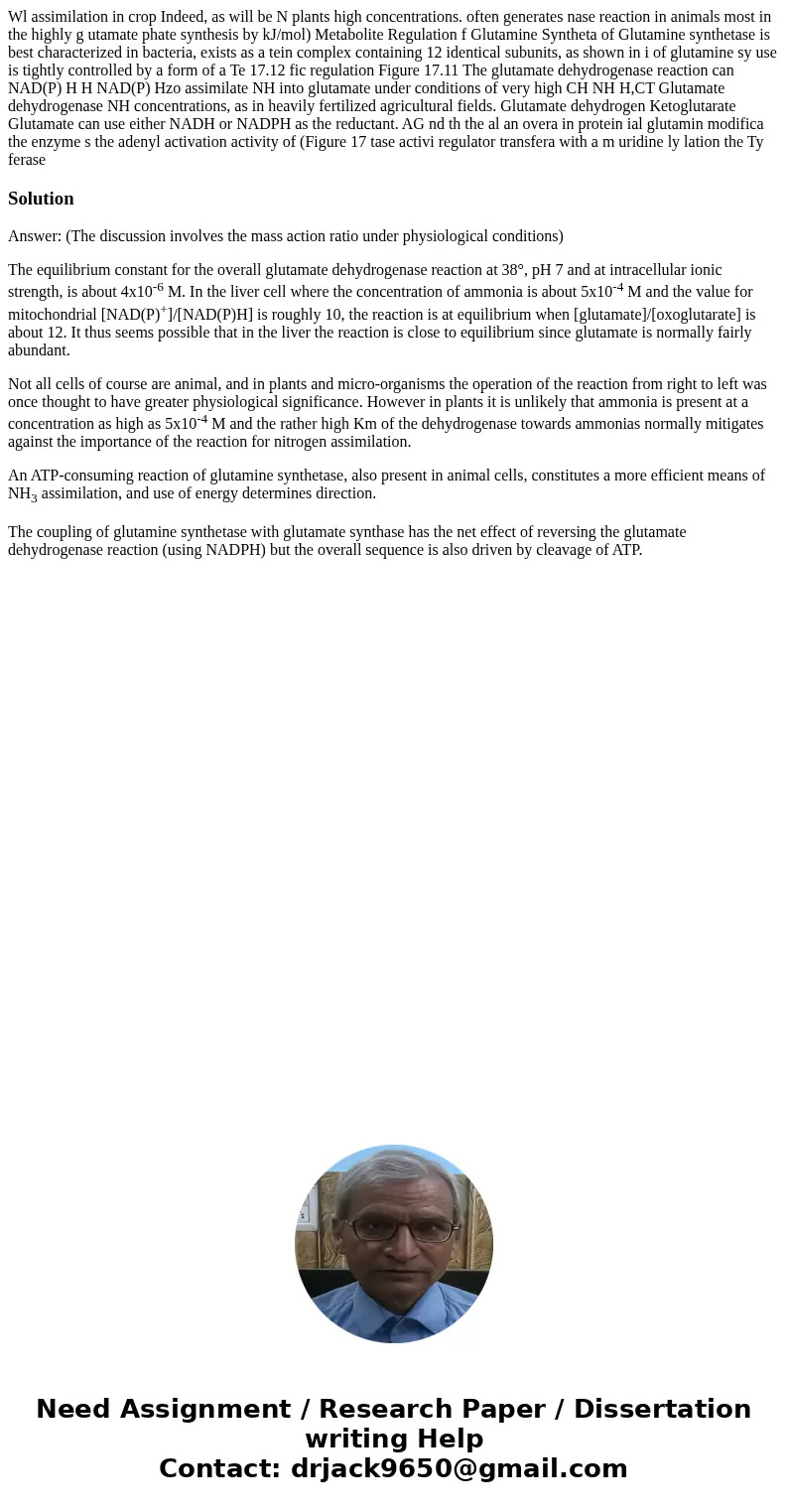Wl assimilation in crop Indeed as will be N plants high conc
Solution
Answer: (The discussion involves the mass action ratio under physiological conditions)
The equilibrium constant for the overall glutamate dehydrogenase reaction at 38°, pH 7 and at intracellular ionic strength, is about 4x10-6 M. In the liver cell where the concentration of ammonia is about 5x10-4 M and the value for mitochondrial [NAD(P)+]/[NAD(P)H] is roughly 10, the reaction is at equilibrium when [glutamate]/[oxoglutarate] is about 12. It thus seems possible that in the liver the reaction is close to equilibrium since glutamate is normally fairly abundant.
Not all cells of course are animal, and in plants and micro-organisms the operation of the reaction from right to left was once thought to have greater physiological significance. However in plants it is unlikely that ammonia is present at a concentration as high as 5x10-4 M and the rather high Km of the dehydrogenase towards ammonias normally mitigates against the importance of the reaction for nitrogen assimilation.
An ATP-consuming reaction of glutamine synthetase, also present in animal cells, constitutes a more efficient means of NH3 assimilation, and use of energy determines direction.
The coupling of glutamine synthetase with glutamate synthase has the net effect of reversing the glutamate dehydrogenase reaction (using NADPH) but the overall sequence is also driven by cleavage of ATP.

 Homework Sourse
Homework Sourse